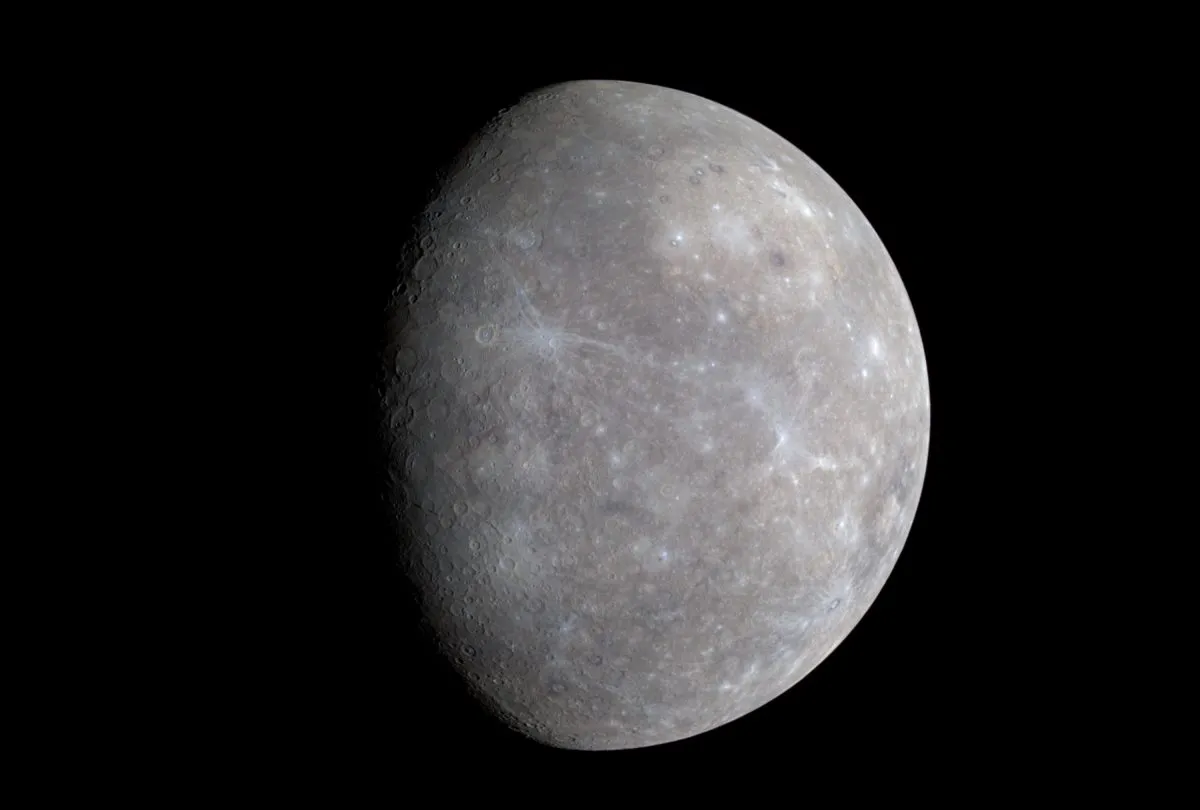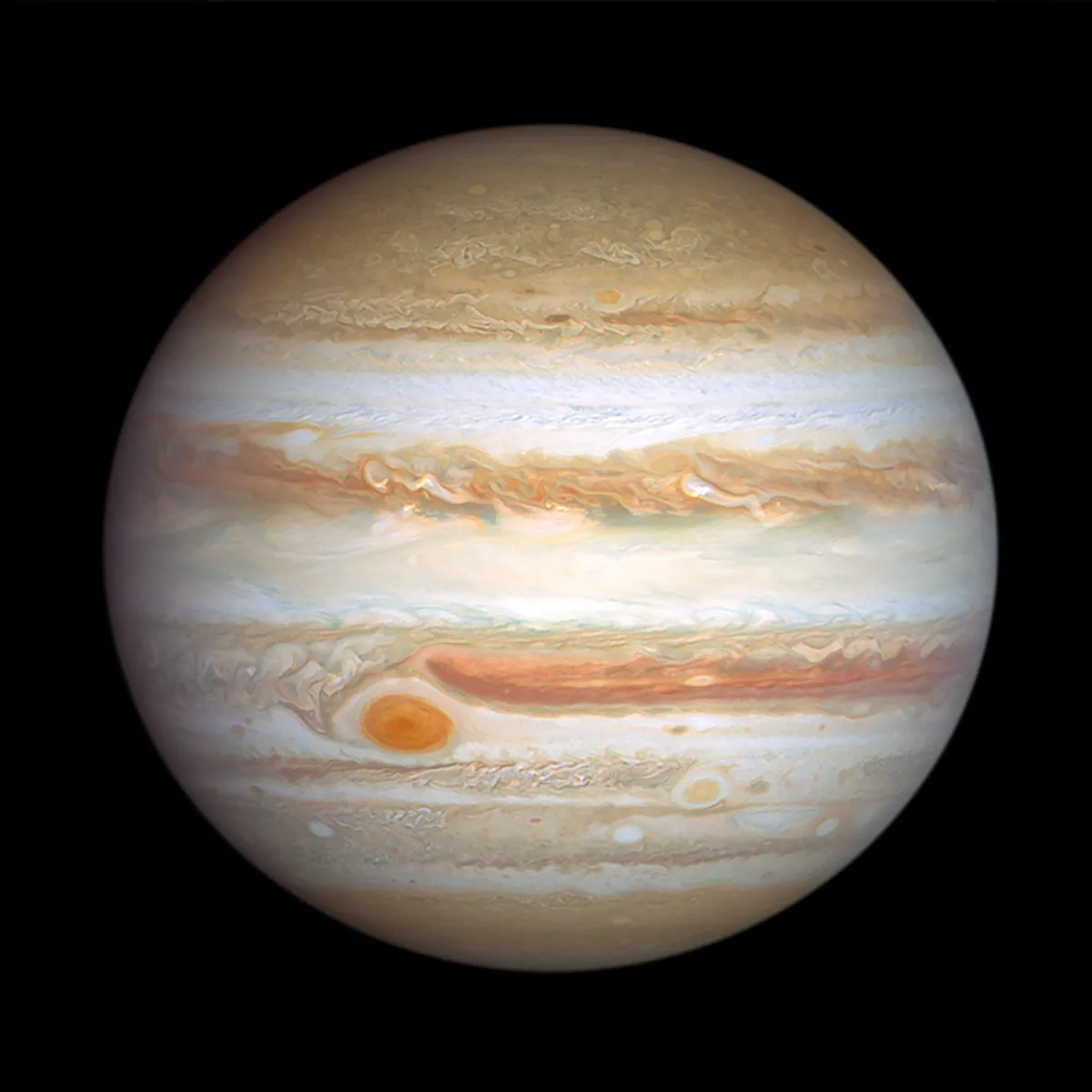Once upon a time, every school child knew that there were nine planets in the Solar System, and knew their order too.
Then all of a sudden, in 2006, there were eight, after Pluto was downgraded to ‘dwarf planet’ status.
This followed the discovery of several similar but even larger bodies out at the edge of the Solar System, both in the Kuiper Belt and the ‘scattered disc’ that lies beyond it.
When we look at the planets and consider their interactions, we can order and compare them in various ways.

We may wish to compare one planet to another that is close to it in space, in which case we’d look at orbital distance (how far the planets are from the Sun).
Or we may want to order planets in terms of their physical size (radius), mass, orbital length (how far they travel during one trip around the Sun) or orbital velocity.
So here are the planets of the Solar System ranked according to each one of those variables, starting with their distance from the Sun.
Solar System planets average distance from the Sun
- Mercury: 57,909,227km
- Venus: 108,209,475km
- Earth: 149,598,262km
- Mars: 227,943,824km
- Jupiter: 778,340,821km
- Saturn: 1,426,666,422km
- Uranus: 2,870,658,186km
- Neptune: 4,498,396,441km
That’s the order of the planets we’re all familiar with. You may even have memorised a handy mnemonic for it.

Understandably, ranking the planets by orbital circumference produces an identical order:
Solar System planets orbital circumference
- Mercury: 360 million km
- Venus: 679 million km
- Earth: 940 million km
- Mars: 1,430 million km
- Jupiter: 4,887 million km
- Saturn: 9,000 million km
- Uranus: 18,000 million km
- Neptune: 28,300 million km
Planetary orbits aren’t quite a series of concentric circles, but they’re close enough to on, so those circles get larger the further you go from the Sun.
The above values are approximations based on the data available, due to the fact that planets' orbits are not perfect circles.
When you look the planets’ orbital velocities, though, the order reverses…
Solar System planets by orbital velocity
- Neptune: 19,566km/h
- Uranus: 24,477km/h
- Saturn: 34,701km/h
- Jupiter: 47,002km/h
- Mars: 86,677km/h
- Earth: 107,218km/h
- Venus: 126,074km/h
- Mercury: 170,503km/h
That may seem counterintuitive. You might think planets with longer orbits would ‘speed up’ to compensate.
But what is it that causes planets to orbit the Sun in the first place? That’s right: gravity.
And the Sun’s gravity is strongest at the centre of the Solar System and weakest at the fringes – which is why Mercury moves the fastest and Neptune the slowest.

It’s once we move onto mass and radius, though, that the planets’ order becomes less obvious…
Solar System planets by mass
- Mercury: 330,104,000,000 billion tonnes
- Mars: 641,693,000,000 billion tonnes
- Venus: 4,867,320,000,000 billion tonnes
- Earth: 5,972,190,000,000 billion tonnes
- Uranus: 86,810,300,000,000 billion tonnes
- Neptune: 102,410,000,000,000 billion tonnes
- Saturn: 568,319,000,000,000 billion tonnes
- Jupiter: 1,898,130,000,000,000 billion tonnes
Solar System planets by radius
- Mercury: 2,440km
- Mars: 3,390km
- Venus: 6,052km
- Earth: 6,371km
- Neptune: 24,622km
- Uranus: 25,362km
- Saturn: 58,232km
- Jupiter: 69,911km
These last rankings, as you can see, DON’T tally neatly with distance from the Sun.
That’s because a planet’s mass and radius are driven mostly by its composition, rather than its location in space.
The former does, of course, depend somewhat on the latter.
All eight planets were originally ‘loose’ gas, dust or ice molecules in orbit around the Sun, and the respective mass of different molecules would cause them to clump together at different distances from it.

But then you also have to take into account various other facts of Solar System activity, such as asteroid bombardments and the fact that Jupiter has shifted position within the Solar System at least twice.
The result of all this being rankings by mass and radius that are a little more higgledy-piggledy than the rest!
Then again, we’re using the word ‘rest’ fairly loosely there. Other ways to order the planets of the Solar System could include surface gravity (dictating how high you could jump on other planets), rotational period (how long is their day in Earth hours/days?), density, orbital period (how long is their year in Earth months/years?) or average surface temperature.
